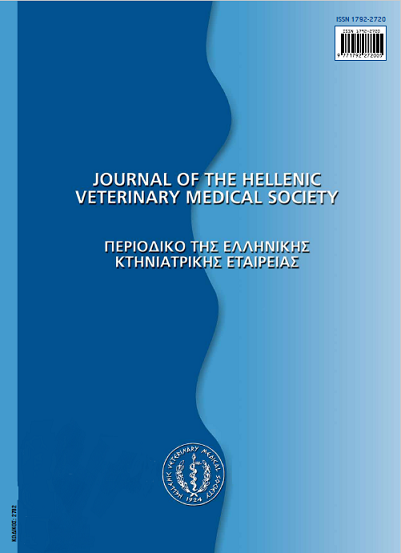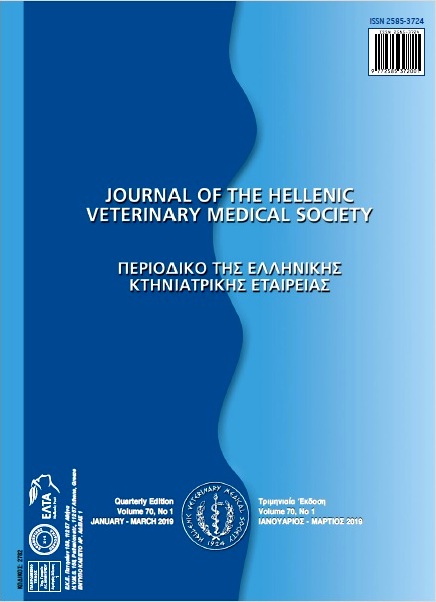The Impact of Endometritis on Specific Oxidative Stress Parameters in Cows

Abstract
This study was aimed to investigate the presence of uterine infection and the relationship between the severity of uterine infection and some oxidative stress parameters in cows in early postpartum period. Sixty six cows that were in the period between the 30th and 32rd days of postpartum were included in the study. Endometrial inflammation was scored according to the condition of the uterus at rectal and ultrasonographic examinations and the character and amount of uterine discharge from endometritis I through III, the latest being the most severe. Endometrial samples were taken from the clinically healthy animals by cytobrush method, and then stained with Giemsa for presence of polymorphonuclear leukocytes (PMN). Cows with a PMN percentage less than 18% were considered to be healthy (control, n=20). All cows were sampled for blood. Nitric oxide (NO) levels in Group I (Endometritis I; n=20), Group II (Endometritis II; n=16), Group III (Endometritis III; n=10) and the control group were determined to be 23.0±0.63 nmol/mL, 32.23±0.97 nmol/mL, 36.56±0.48 nmol/mL, and 11.10±0.29 nmol/mL, respectively. The differences among the groups were found to be statistically significant. Malondialdehyde (MDA) level was highest in Group III (6.38±0.13 μmol/L), and its level significantly decreased with the reduced severity of endometritis. The comparison of the groups for total antioxidant capacity (TAC) and total oxidant capacity (TOC) demonstrated that endometritis caused a decrease in TAC levels (P<0.05), but did not affect TOC levels. Endometritis increased serum NO and MDA levels, and decreased TAC levels, but had no effect on TOC levels. In conclusion, NO and MDA, as well as TAC can be used as a biochemical marker for estimation of the severity of endometritis in cows.
Article Details
- How to Cite
-
KAYA, S., ÖĞÜN, M., ÖZEN, H., KURU, M., ŞAHIN, L., KÜKÜRT, A., & KAÇAR, C. (2018). The Impact of Endometritis on Specific Oxidative Stress Parameters in Cows. Journal of the Hellenic Veterinary Medical Society, 68(2), 231–236. https://doi.org/10.12681/jhvms.15610
- Issue
- Vol. 68 No. 2 (2017)
- Section
- Research Articles

This work is licensed under a Creative Commons Attribution-NonCommercial 4.0 International License.
Authors who publish with this journal agree to the following terms:
· Authors retain copyright and grant the journal right of first publication with the work simultaneously licensed under a Creative Commons Attribution Non-Commercial License that allows others to share the work with an acknowledgement of the work's authorship and initial publication in this journal.
· Authors are able to enter into separate, additional contractual arrangements for the non-exclusive distribution of the journal's published version of the work (e.g. post it to an institutional repository or publish it in a book), with an acknowledgement of its initial publication in this journal.
· Authors are permitted and encouraged to post their work online (preferably in institutional repositories or on their website) prior to and during the submission process, as it can lead to productive exchanges, as well as earlier and greater citation of published work.




